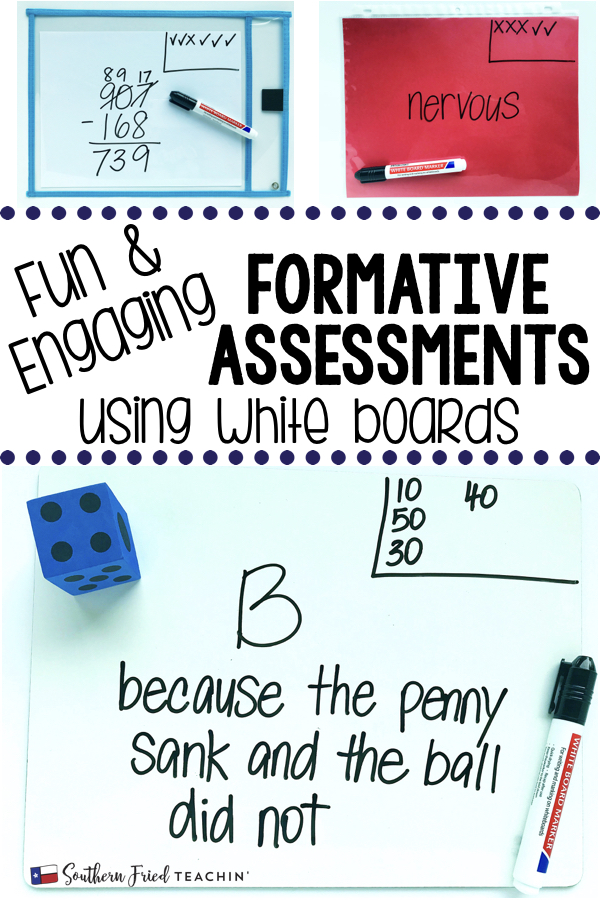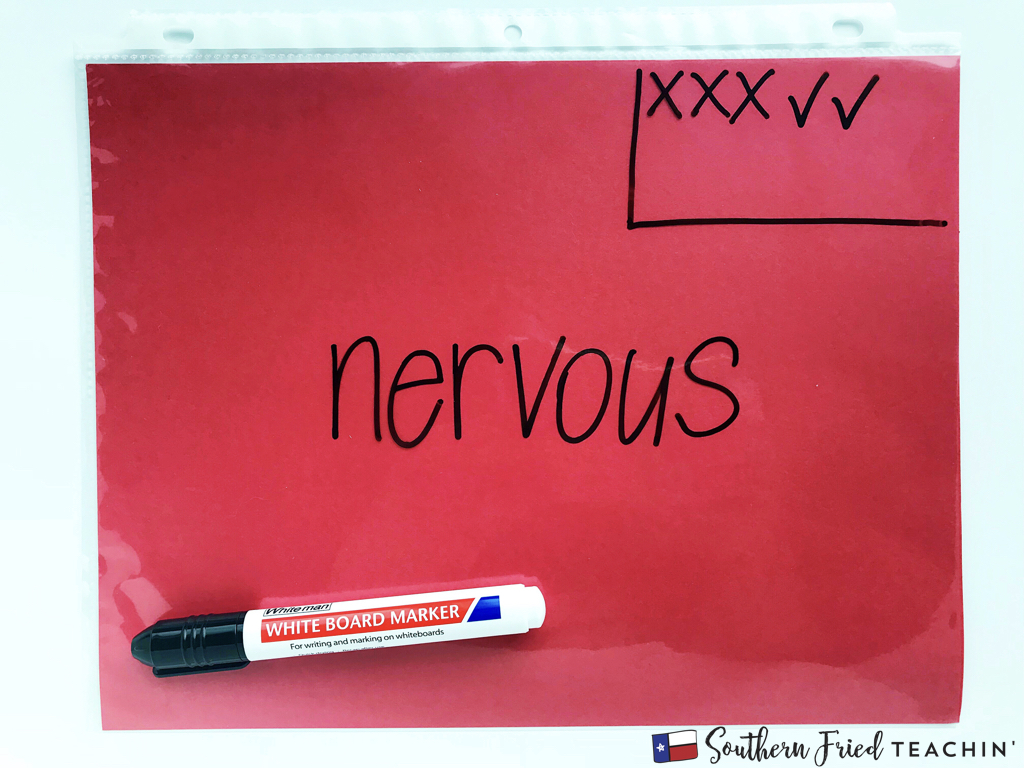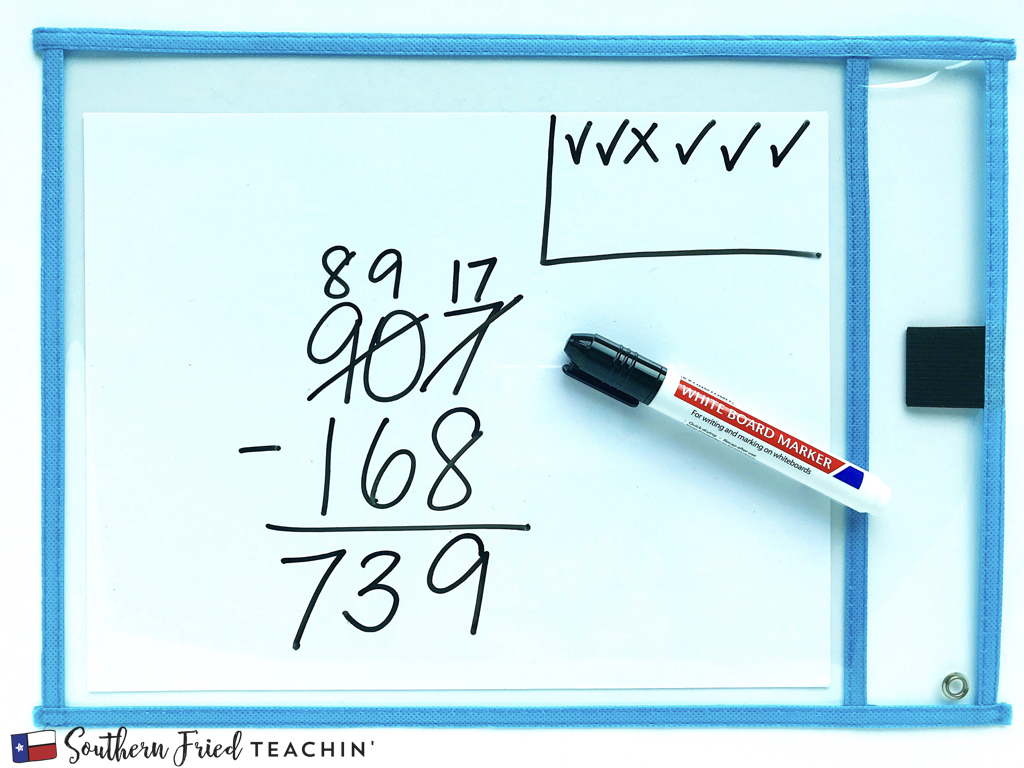I LOVE using white boards in my classroom. I use them as much as possible in any subject I can. I wanted a simple and fun way to track how my students were doing in a given lesson, so I created these two simple formative assessments. And the best part is that they are super easy to implement, and my students literally beg to play them!

You can use store bought white boards, white boards made from shower board from Lowe’s or Home Depot, or you can make your DIY “white boards”. I have two different DIY white boards: using a plastic sheet protector and a piece of card stock or using dry erase pockets like THESE and a piece of white paper. These are great when you’re on a budget, and they work just as well as the fancy ones.
So what are the two different formative assessments that I use with my white boards?
Check Box
This is super easy to implement, student-friendly, and is flexible to accommodate any number of questions you ask your students.
Have your students draw a simple box in the right-hand corner of their white board. Not too big and not too small. Look at the example below using card stock and a plastic sheet protector.

Ask a question to your students, and have them write their answer in the main part of the white board. In this case, “nervous” is the answer. I always have my students keep it face down on their desks until I say, “One, two, three….show!” and all students show their boards. If they get the question correct, they put a CHECK. If they get the question wrong, they put an X.
In the example above, you can see that this student got 3 X’s and then 2 CHECKS which tells me that they were struggling in the beginning but then began to get it.
If they got all CHECKS, then they are totally getting it.
Sometimes, I will say to my students after five or so questions, “If you have 3 or more X’s, then find someone who has all CHECKS and work with them for the next couple of questions.” It’s a win-win because students can explain things better, it forces them to internalize while teaching the concept, and students love working with each other.
This is a super easy way to take a formative assessment grade as well. If you ask 10 questions, then each question is worth 10 points. After all the questions have been asked, I walk around and note how many CHECKS each student got and the corresponding grade. Easy peasy grade!
Here is an example for a math lesson.

I love that it works with ANY topic and ANY subject!
After teaching my students the check box method, they never wanted to do just “regular” white board practice anymore….they always requested to use the check box. It made it more fun and engaging for them, and they loved being able to track their own progress.
Snake Eyes
My second formative assessment that I wanted to share with you is the game of Snake Eyes. I used to belong to a monthly Bunco group. One day I made this game up in my classroom, and it became an instant hit. Students absolutely LOVED it!

All you need is a white board, white board marker, and either a die.
For this game, I have students play with their partners. The teacher asks a question, and students discuss the answer with their partner and write it down. Again, I have them put it face-down until I say “One, two, three….show!”. After giving the correct answer, partner pairs roll the die if they got it right. If they do not get it right, they cannot roll.
Here’s how the points work:
- If you roll a 6, you earn 60 points.
- If you roll a 5, you earn 50 points.
- If you roll a 4, you earn 40 points.
- If you roll a 3, you earn 30 points.
- If you roll a 2, you earn 20 points.
- BUT….if you roll a 1, you just got “Snake Eyes” and lose ALL your points
For a fun variation, you can give each partner pair two dice. They would take the two numbers that they rolled to get the points. For example, if you rolled a 4 and a 3, you would earn 70 points because 4 + 3 = 7 and add a 0, which would be 70 points. Or if you rolled a 6 and a 5, you would earn 110 points because 6 + 5 = 11 and add a 0, which would be 110 points.
I’ve done both, and students love both versions.
You can say that the partners with the most points gets a prize or win the game or whatever you want. They just love playing the game so much that don’t even care what they win.
To cut down on the dice flying all over the room, I gave each partner pair a small paper plate with which to roll the dice on and told them that the dice couldn’t leave the plate. It worked most of the time.
Can’t wait to hear what your students think of these assessments!


![As teachers we know that vocabulary is pivotal in students’ success. When I was growing up, our vocabulary activities consisted of looking up definitions in the dictionary and copying them down on notebook paper. Do you think I truly understood those vocabulary words? Not. One. Bit. In order to truly understand vocabulary words and what […]](https://i.pinimg.com/236x/97/e8/f5/97e8f54812d68c0d8c084b04391b3255.jpg)

![Have you ever heard of choice boards? I LOVE using choice boards in the classroom. I use them in math, reading, language arts, science, social studies, etc. They work in ANY subject and with ANY topic. Here are my top ten reasons to love choice boards! Students love to be able to make choices in […]](https://i.pinimg.com/236x/b9/24/a5/b924a5282fc6478ab0c9293eb5797602.jpg)
